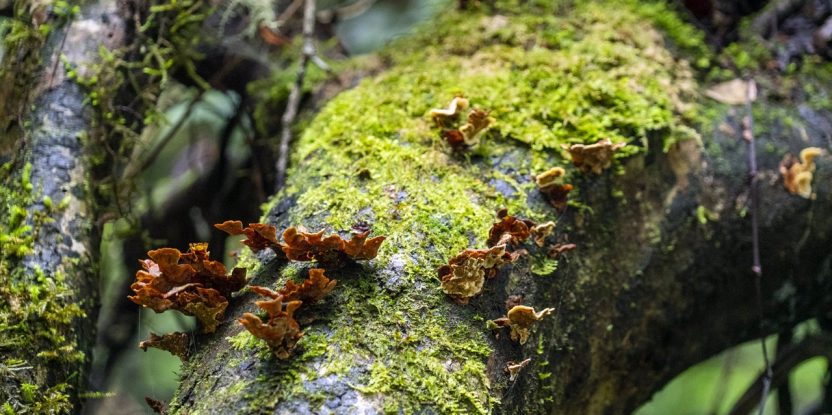The Intergovernmental Science–Policy Platform on Biodiversity and Ecosystem Services (IPBES) approved the Summary for Policy Makers of the Assessment Report on the Diverse Values and Valuation of Nature on 9 July 2022 in its ninth plenary meeting in Bonn, Germany.
“It is essential to understand the different ways in which people value nature, as well as the different ways in which these values can be measured,” said Ana Maria Hernández Salgar, IPBES chairperson. “The diversity of values of nature is often overlooked in policy decisions. Effective policy decisions about nature must be informed by the wide range of values and valuation methods, which makes the IPBES’ values assessment a vital scientific resource for policy and action for nature and human well-being.”
The Assessment Report comes at a critical time for life on Earth, which is fast losing its richness. The Report considers the trend to assign various values — including financial ones — to nature in an attempt to recognize the worth of natural ecosystems to human wellbeing.
“‘Invaluables’ may have the highest value,” said Meine van Noordwijk, CIFOR-ICRAF’s distinguished science fellow and one of 20 experts from around the world who functioned as ‘convening lead author’ for the Assessment. “For some types of decisions and decision-makers, it is relevant to use financial units to represent at least part of the value of nature to people but there is always a risk that such statements are misinterpreted.”
The Assessment has been a four-year journey, with many rounds of feedback, peer review and policy consultations. Detailed discussions by government delegates of the Summary Report will have increased the relevance of the key messages for discussion at global and national levels.
The word ‘value’ has many meanings, ranging from numbers through prices to non-negotiable core principles, he said. To value a tree, a forest or an agroforestry landscape means interacting with many perspectives. The more people involved, the wider the set of values that matters and which has to be taken into account.
This is of grave importance owing to the rapid and massive loss of species that is not confined to a particular group of drivers in one or two locations but is worldwide, all-embracing and under-recognized.
Consumers, for example, currently don’t pay a ‘true price’ for products sourced from nature (which is, ultimately, all products). Decisions by consumers and producers that are based on a narrow set of market values for nature are the hidden driver of the global biodiversity crisis. Bringing these values into the open can help people better understand the costs of over-exploitation and increase the likelihood of ensuring that the values — including the less tangible, non-financial ones — are honoured and preserved.
Importantly, the way the ‘conservation of nature’ is currently framed frequently ignores the values of people who live in any given ‘conservation’ area, with usually negative impact on the intended objectives for the conservation area. These people need to be recognised and respectfully included in decision processes.
Van Noordwijk noted that from examination of countries’ biodiversity reports and action plans drawn up in response to the UN Convention on Biological Diversity, it’s clear that less than 25% of the world’s governments are on track to integrate values of nature that are beyond those recognized by markets. But he also noted that current valuation studies rarely report on the uptake of such in decisions related to governments’ policies and programmes.
The six chapters of the Assessment Report make the point of distinguishing between ‘instrumental’ values — which are those that can be measured by the goods and services that nature, biodiversity or well-functioning ecosystems provide to people — and ‘relational’ values: those that may be equally important to people’s well-being in immaterial ways.
The types of values that are most effectively communicated depend on the audience and the context, meaning that communication is as important as the decisions themselves that are made by governments and others in relation to the conservation of biological diversity.
“Scientists and other people interested in the issue have to help decision-makers understand so that they can frame policies and actions that will be effective,” he said. “Particularly, drawing decision-makers’ attention to the fact that humans who depend most on an area considered worthy of conservation need to be fully involved in decisions regarding it and that the intangible values — such as climate regulation, maintenance of healthy ecosystems and the water cycle — need to be fully recognised.”
Van Noordwijk stressed that from a ‘forests, trees and agroforestry’ perspective, the international acceptance of the Assessment Report can help pursuit of a dual strategy of 1) clarifying the way ecosystem structures and functions contribute instrumental values to people locally, nationally and globally and, thus, the economic values that are at stake if the current trend of biodiversity loss continues, and which can be partially recovered through ‘restoration’ of degraded landscapes; and 2) engaging with stakeholders to appreciate, and recognize, the various relational values that matter to them.
“The latter can, at the very least, help in more effective communication,” he said, “not only in a language that people can understand but also in a language that speaks to their hearts.”
Around the world, examples abound of conflicts that might be reduced or completely eradicated if these points are better understood.
We want you to share Forests News content, which is licensed under Creative Commons Attribution-NonCommercial-ShareAlike 4.0 International (CC BY-NC-SA 4.0). This means you are free to redistribute our material for non-commercial purposes. All we ask is that you give Forests News appropriate credit and link to the original Forests News content, indicate if changes were made, and distribute your contributions under the same Creative Commons license. You must notify Forests News if you repost, reprint or reuse our materials by contacting forestsnews@cifor-icraf.org.
